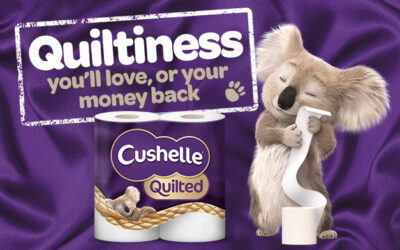Life insurance firm DeadHappy found itself in the eye of a social media storm recently, when the face of prolific serial killer Dr Harold Shipman emerged on one of its adverts.
The words ‘Life Insurance. Because you never know who your doctor might be’ appeared on the ad, alongside an image of the former North West GP who was convicted of murdering 15 of his patients, and suspected of killing up to 250 more.
The controversial ad was met with widespread condemnation online, branded ‘disgusting’, ‘crass’ and ‘shocking’ by some social media users, along with complaints from relatives of Shipman’s victims.
Alan Royston wrote on Twitter: I’m not #DeadHappy, I’m ‘DeadAngry’! As the son of a Shipman victim I take umbrage at this distasteful, crass style of advertising. This advert is both a slight on good GPs, and the families who suffered. They say there’s no such thing as bad advertising, I hope this is.”
Oh dear. Whether you think this is in bad taste or a clever marketing ploy, you can guarantee the FCA will have something to say. Has this company thought about it’s customers at all?? — https://t.co/Qv7pbxZWIq#InsuranceServicesSurrey #InsuranceServices #Surrey #insurance
— Insurance Services (@InsureService) January 25, 2023
Industry body Advertising Standards Authority (ASA) said it is reviewing more than 50 complaints and according to the BBC, the Financial Conduct Authority (FCA) has since placed restrictions on future campaigns.
An FCA ruling states the company “must cease to communicate any further financial promotions that have not received prior approval”, meaning the firm’s future adverts will need to be cleared by its insurance provider, Shepherds Friendly.
Initially defending the ad before complaints rolled in, DeadHappy said using Shipman’s image was intended to be provocative but that “provocative is different to being offensive”, adding that it had been intended to make people “stop and think”. The firm has since apologised and removed the advert.
It’s not the first time a brand has taken risks with provocative marketing campaigns and hit the headlines for all the wrong reasons. In the race to cut through to consumers in often saturated markets, the shock factor of provocative messaging can tread a fine line towards offensive instead.
“Brands have to translate their message into a story that is relevant, value-led, and in-keeping with the trends that are current and novel, in order to create that ‘viral moment’, but also understand that when there is a significant cultural event, whether it’s right for a brand to associate themselves with it,” Alex Brown, CCO at Campfire, told Prolific North.













